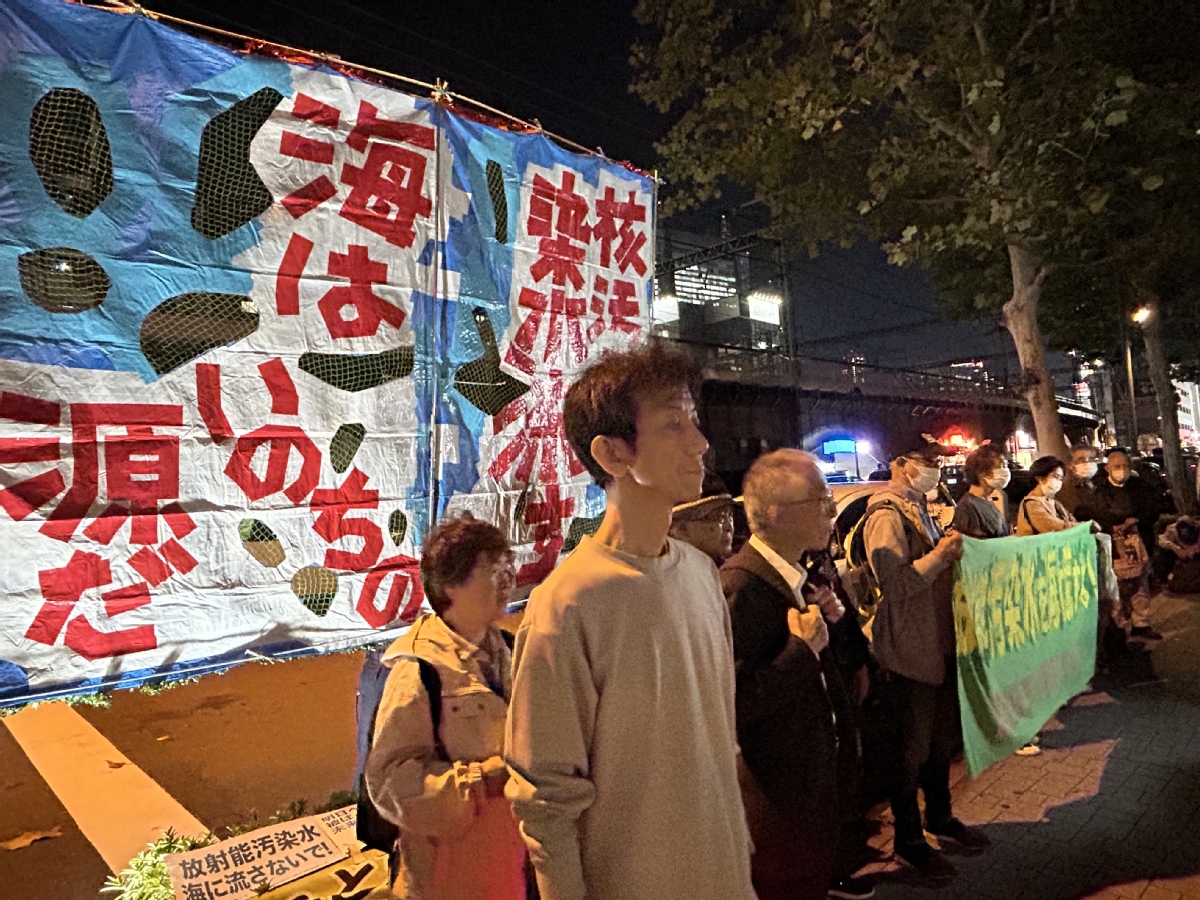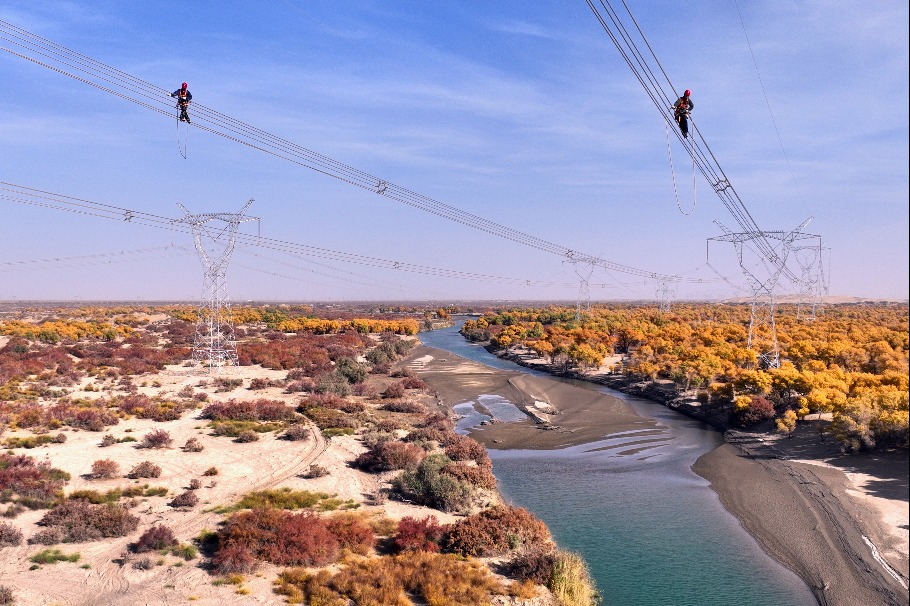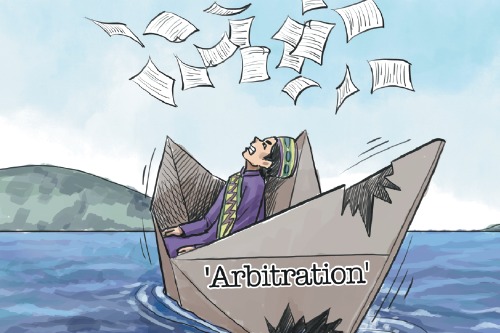Stronger global monitoring for Japan's toxic water release


The Japanese government recently announced that International Atomic Energy Agency Director General Rafael Grossi has been invited to visit Japan from Tuesday to Thursday. The invitation raises many questions because the Japanese government has been discharging the nuclear-contaminated water from the damaged Fukushima Daiichi nuclear power plant into the Pacific Ocean by claiming it had got the "green light" to do so from the IAEA.
Despite the opposition from neighboring countries and the international community as a whole, Japan has proceeded with its discharge plan, and has already released 23,000 tons of contaminated water into the ocean. Japan's plan for fiscal year 2024 includes releasing another seven rounds of the radioactive water, totaling about 54,600 tons. This decision has ignited a debate on the complex composition of the contaminated water, the limitations of the purification process, and the potential risks it poses to the marine environment and human health.
The nuclear-contaminated water contains more than 200 types of radioactive nuclides, all of which cannot be removed, as Japan's advanced liquid processing system (ALPS) is designed to remove only 62 types of these nuclides. Worse, the ALPS has not been effective in removing even those 62 types of nuclides from the radioactive water.
About 70 percent of the water treated by the ALPS still does not meet the discharge standards, as it retains radioactive nuclides such as carbon-14, iodine-129, cesium-137 and strontium-90. This raises concerns about the safety of discharging the nuclear-contaminated water into the ocean, especially given its potential impact on marine ecosystems and human health.
By discharging the contaminated water into the ocean, Japan has not only violated international radiation protection norms and the 1972 London Dumping Convention but also failed to fulfill its global obligations to protect and preserve the marine environment. The potential impact of this decision extends beyond Japan's borders, violating the principles of international cooperation and environmental protection, and affecting the global community.
Moreover, the discharge of the radioactive water presents economic and scientific challenges. While it is commonly believed to be the least expensive disposal method, Japan's decision overlooks the need for huge amounts of resources by front-end operations to, for example, curb the use of underground water and facilitate the treatment of the contaminated water by the ALPS.
Additionally, the associated costs of addressing secondary crises and compensating the affected stakeholders have far exceeded initial estimates, highlighting the financial burden of this approach. For instance, Japan initially estimated the cost of discharging the radioactive water to be 3.4 billion yen ($23 million). However, as of now, the related expenses have exceeded 129 billion yen, with further escalations expected in the future.
The decision to discharge the contaminated water into the ocean is not scientific. But the Japanese government claims that discharging the contaminated water into the ocean is necessary to clear space for the decommissioning work at the damaged Fukushima nuclear power plant.
However, by claiming the release of the contaminated water into the ocean is a "preparatory step" for decommissioning, Japan has not only revealed its simplistic linear mindset but also prompted the international community to question its real intentions, especially given the unknown timeline and feasibility of the decommissioning process. True, the disposal of nuclear-contaminated water is intertwined with the decommissioning of the reactor and the post-accident cleanup, but a comprehensive systemic approach should be adopted to do so.
The international community has responded to Japan's release of the contaminated water by advocating stricter monitoring and regulatory requirements. But the existing monitoring arrangements have limitations, including unreasonable dilution, lack of transparency, and insufficient international review and monitoring. To address these shortcomings, the IAEA should play its due role of reviewing Japan's actions and establishing a long-term international cooperation mechanism for monitoring the developments.
The discharge of the Fukushima nuclear-contaminated water is a matter of global nuclear safety and marine ecological protection. As a crucial intergovernmental organization managing nuclear affairs, the IAEA should play a more proactive and constructive role in strictly supervising Japan's actions and establishing a global cooperation mechanism for monitoring the radioactive water. And some key criteria must be met to make this mechanism successful.
To begin with, it is essential to define the objectives and primary principles of international monitoring cooperation, which is to minimize the negative impacts of the radioactive water discharge into the ocean on humans and the environment, with the primary principle being risk prevention in order to better protect the environment protection and human rights. Institutions should view the discharge of the radioactive water from a comprehensive and strategic perspective, and continuously review and evaluate the suitability of the disposal method.
Also, to ensure the objectivity and fairness of the monitoring process and results, the participation of other countries, especially Japan's neighbors and the Pacific island nations, should be considered while appointing monitoring inspectors and other monitoring personnel, based on nationality, region, profession and other factors.
Besides, the disposal of the nuclear-contaminated water into the sea and the post-accident cleanup are a long-term endeavor. Therefore, institutions should formulate detailed monitoring plans, including specific issues such as the types of isotopes to be monitored, the frequency and scope of the radioactive water release, reporting on the developments and other pertinent details, based on thorough discussions at experts' meetings. This will ensure the credibility and authoritative status of the international cooperation mechanism for monitoring the nuclear-contaminated water, including its release into the ocean.
The author is a research fellow at the Institute of Japanese Studies, Chinese Academy of Social Sciences.The views don't necessarily reflect those of China Daily.
If you have a specific expertise, or would like to share your thought about our stories, then send us your writings at opinion@chinadaily.com.cn, and comment@chinadaily.com.cn.


































